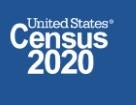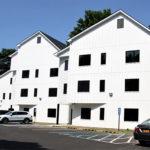ALBANY – Governor Andrew Cuomo has announced that New York State will spend as much as $60 million to make sure that every New Yorker is counted in the upcoming 2020 U.S. Census. The State will leverage resources across dozens of agencies, public authorities, CUNY, and SUNY that regularly interact with millions of New Yorkers. Together, they will launch a wide-reaching campaign valued at up to $40 million from existing resources that will inform the public about the Census and support efforts to encourage residents to complete the questionnaire. Additionally, $20 million from the FY 2020 Budget is being made available to support targeted efforts in hard to reach communities.
“Counting every New Yorker in the 2020 Census is critical to ensuring we are accurately represented in Congress and receive the federal funding we deserve,” Governor Cuomo said. “While the federal government has thrown up road block after road block – spreading fear among immigrant communities in the process – in New York we will break through and make sure that even our most difficult to reach communities are counted.”
Dutchess County officials are pleased with the Governor’s efforts, according to John Penney, chairperson of the Dutchess County Complete Count Committee. “This is welcome news. For months, the Dutchess County Complete Count Committee has been raising awareness about the importance of filling out the 2020 census. Communities that are undercounted will lose out on critically important federal funds, among other ramifications. Getting everyone counted is essential, and the state putting resources into this effort will greatly aid in obtaining that goal.”
The State’s support for the Census count builds on findings and recommendations released in October by the New York State Complete Count Commission, which held 10 public hearings and reviewed hundreds of comments, expert testimonies and in-depth analysis of previous census results. The Commission found that the 2020 Census faces unprecedented challenges. For the first time, the Census will be conducted primarily online, and while the Trump administration failed in its effort to include a citizenship question on the Census, its attempt to do so spread fear among immigrant communities. The Trump administration and Congress have also failed to fully fund Census operations in the years leading up to 2020. As a result of that failure, the Census Bureau has been forced to cut costs, shifting responsibility for on-the-ground work necessary to drive participation in the 2020 Census from the federal government to state and local partners. The number of U.S. Census Bureau field offices in New York has dropped from 35 in 2010 to 21 in 2020.
New York State agencies, including the Departments of Labor, Motor Vehicles, Agriculture and Markets; the offices of Mental Health, Alcohol and Substance Abuse, and People with Developmental Disabilities, Empire State Development, and the Division of Veterans Affairs will conduct outreach and provide Census-related information across their millions of contacts with the public. While the U.S. Census Bureau is only providing translation for a fraction of the languages spoken in New York State, State employees are already trained to use the Language Line, which provides on the spot translation services for more than 200 languages. Examples of how State entities will leverage their resources include, but are not limited to:
- The Department of Labor, which reaches more than 9 million workers, 550,000 businesses and serves more than 500,000 New Yorkers directly, will open all 96 of its Career Centers as census assistance centers where members of the public can securely complete their 2020 Census questionnaire online. Career Centers will also display Census information on TV monitors in the waiting room, posters and handouts in multiple languages. The Department of Labor has also already promoted Census Bureau jobs at more than 100 jobs fairs and other recruiting events it hosts in every region of the state.
- Every New Yorker lives within 30 miles of one of SUNY’s 64 campuses and CUNY adds 25 campuses across New York City’s five boroughs, all of which can serve as nodes that combine outreach efforts with resources. The two university systems, including community colleges, will also collaborate with the State to ensure their nearly 700,000 students are counted. Empire State College will open dozens of computer labs across the state for members of the public to use to complete the Census.
- The Department of Motor Vehicles has 27 state-run district offices and 94 county-run field offices across the state through which it reaches about 12 million customers annually with 19.5 million connecting with the Department through its website. Census information will be displayed and distributed at every location and staff will be equipped to promote the Census in discussions with all visitors. It will also tap its database of approximately 4 million email addresses.
The 2020 Budget also appropriated up to $20 million to support Census outreach. A Request for Expressions of Interest will be released next week with a response due back in 30 days. The funding will be targeted to “trusted voice” not-for-profit organizations and will be focused on reaching hard to count communities, including those with high populations of immigrants, children under 5 years old, and seniors. Funding awards will be determined based on plans evaluated on a variety of factors, including the presence of cooperating libraries and other institutions, the proven capability of the organizations, and other factors.
These efforts will build on action already taken directly by the State that added over 225,000 addresses to the Census Bureau’s Master Address file. In addition, following leadership from New York State, local governments added and corrected several hundred thousand addresses. This multi-layered, multi-year effort produced nation-leading results. Governor Cuomo also invested $500 million to leverage $1.4 billion from the private sector to expand high-speed Internet to all New Yorkers with nearly 90% of the funding already awarded.








